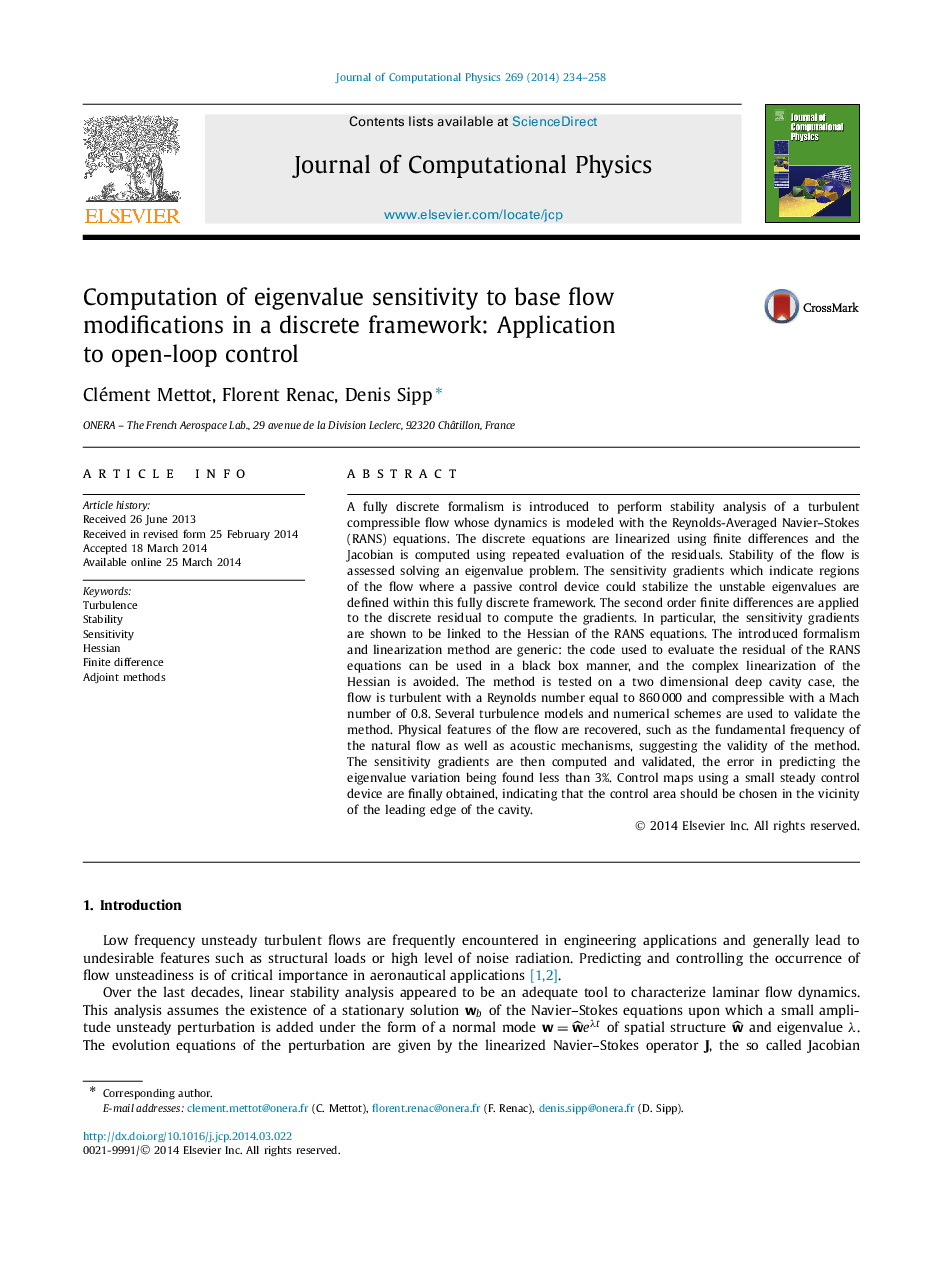| Article ID | Journal | Published Year | Pages | File Type |
|---|---|---|---|---|
| 520155 | Journal of Computational Physics | 2014 | 25 Pages |
A fully discrete formalism is introduced to perform stability analysis of a turbulent compressible flow whose dynamics is modeled with the Reynolds-Averaged Navier–Stokes (RANS) equations. The discrete equations are linearized using finite differences and the Jacobian is computed using repeated evaluation of the residuals. Stability of the flow is assessed solving an eigenvalue problem. The sensitivity gradients which indicate regions of the flow where a passive control device could stabilize the unstable eigenvalues are defined within this fully discrete framework. The second order finite differences are applied to the discrete residual to compute the gradients. In particular, the sensitivity gradients are shown to be linked to the Hessian of the RANS equations. The introduced formalism and linearization method are generic: the code used to evaluate the residual of the RANS equations can be used in a black box manner, and the complex linearization of the Hessian is avoided. The method is tested on a two dimensional deep cavity case, the flow is turbulent with a Reynolds number equal to 860 000 and compressible with a Mach number of 0.8. Several turbulence models and numerical schemes are used to validate the method. Physical features of the flow are recovered, such as the fundamental frequency of the natural flow as well as acoustic mechanisms, suggesting the validity of the method. The sensitivity gradients are then computed and validated, the error in predicting the eigenvalue variation being found less than 3%. Control maps using a small steady control device are finally obtained, indicating that the control area should be chosen in the vicinity of the leading edge of the cavity.
